Links to Articles
Publishing The Lord of the Rings
V The First Impression of RotK
VI The First Boxed Edition
VII The Readers Union Edition
VIII The First Deluxe Edition
IX Printing and Binding LotR
XIV LotR: A Bibliography
XV LotR: A Bibliography of Slipcases
The History of Middle-earth series
I A Guide to the Contents
II Prices on Dustwrappers
III Original Retail Prices
IV Print Run Sizes
V The Guild Publishing Editions
VI Shaping of Middle-earth Wrapper
VII Peoples of Middle-earth Pulped?
Other Articles
Christopher Tolkien Bibliography
I Think I've Got A Hobbit
Missing Images
Nasty Tricksy Hobbits
Printing and Binding The Hobbit
Songs for the Philologists
The Princess Hobbit
-- Ferguson Dewar
-- Letter from J. R. R. Tolkien
-- Gandalf: Not 'Magician' but 'Wizard'
-- Visions of Gollum
-- Of Smaug and the Jabberwock
-- Magazine Gallery
Tolkien Calendars
Tolkien the Esperantist?
Tolkien's Languages and Alphabets
Unpublished Manuscript Found?
The Sunday Times
December 29, 2002
Tolkien's last great work is discovered
Maurice Chittenden
A yellowing manuscript by JRR Tolkien discovered in an Oxford library could become one of the publishing sensations of 2003. It could also provide clues to the extraordinary success of the film adaptations of The Lord of the Rings.
The 2,000 handwritten pages include Tolkien's translation and appraisal of Beowulf, the epic Anglo-Saxon poem about bravery, friendship and monster-slaying that is thought to have been one of the inspirations for his own tome.
He borrowed from early English verse to concoct the imaginary language spoken by Arwen, played by Liv Tyler, and other elves in the second movie made from the Rings book, The Two Towers, which has become Britain's biggest box office hit this Christmas.
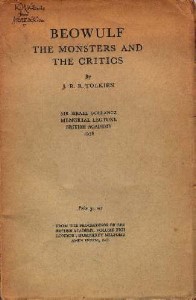 An American academic, Michael Drout, found some of the material, notes bound in board covers, by accident in a box of papers at the Bodleian Library in Oxford.
An American academic, Michael Drout, found some of the material, notes bound in board covers, by accident in a box of papers at the Bodleian Library in Oxford.
Tolkien, a professor at Oxford, was regarded as one of the greatest Anglo-Saxon scholars of the last century and gave a key lecture about the poem.
In 1936, a year before he published his first fantasy novel, The Hobbit, the precursor to The Lord of the Rings, he spoke on Beowulf at the university urging people to read it as a great poem rather than as a historical document.
Written in Britain about 350 years before the battle of Hastings but set in what is now Denmark and Sweden, the poem recounts Beowulf's separate battles with a man-eating monster called Grendel, Grendel's mother and a gold-hoarding dragon that breathes fire.
The oldest-surviving copy, from about 1000, sits behind glass in a controlled environment in the British Museum. The intervening millennium has so altered the language that only scholars can understand it.
Drout, assistant professor of English at Wheaton College in Norton, Massachusetts, had travelled to Oxford by train while on a family visit to London. A self-confessed Tolkien "nut", Drout, 34, had grown up with a map of Middle-earth over his bed.
He was researching Anglo-Saxon scholarship and after looking through the catalogue of the library's Tolkien collection, he asked to see an entry file entitled "Carbon typescripts of Beowulf: the Monsters and the Critics", the title of Tolkien's 1936 lecture. It was brought to him in the reading room in large box file.
Drout, who reads Anglo-Saxon prose to his two-year-old daughter at bedtime, said last week: "I was sitting there going through the transcripts when I saw these four bound volumes at the bottom of the box.
"I started looking through and realised I had found an entire book of material that had never seen the light of day. As I turned the page, there was Tolkien's fingerprint in a smudge of ink.
"My heart was racing as I was writing things down. It was only when I went out to meet my wife that I was running down Catte Street going, 'Oh my God, I have found an unpublished Tolkien manuscript'. "Then I panicked that there was some other, more worthy researcher working on it. Luckily, it turned out not to be true."
After obtaining permission from the Tolkien estate, Drout published Beowulf and the Critics, an extended version of Tolkien's 1936 lecture, in America earlier this month.
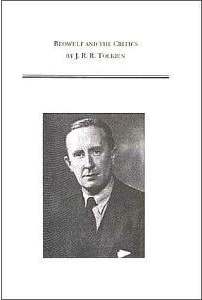 Even more exciting will be Tolkien's translation of the poem and his line-by-line interpretation of its meaning, which will be published next summer.
Even more exciting will be Tolkien's translation of the poem and his line-by-line interpretation of its meaning, which will be published next summer.
Tolkien's name on the cover is likely to make the translation a bestseller, following the version by the Irish poet Seamus Heaney, which beat Frodo Baggins's cinematic rival Harry Potter to the 1999 Whitbread prize.
Drout says Tolkien found inspiration for many of his own storylines and characters in Beowulf. The Anglo-Saxon hero's friendship with Wiglaf is mirrored in the relationship between Frodo and Sam in The Lord of the Rings.
Elves, Orcs and Ents, the latter a type of giant that becomes a walking, talking tree in Tolkien's work, are all mentioned in Beowulf.
This weekend scholars hailed the forthcoming publication of the translation as an important addition to Tolkien's canon.
John Carey, the former Merton professor of English literature at Oxford, said: "Beowulf is enormously hard to translate into alliterative verse, but it sounds remarkable. Tolkien is much closer to the Anglo-Saxon form than Heaney."
Kevin Crossley-Holland, a poet, broadcaster and Anglo-Saxon expert who has published his own translation, said: "It captures the sound of big waves crashing on a shingle beach and the lines die away like water running up a beach."
He added: "Tolkien's work breathes the same world as the Anglo-Saxon poems and the Norse myths. It is umbilically linked."
Heaney said yesterday: "I look forward to reading it very much, but I don't want to compare them. I wouldn't like anyone to pick two lines out of mine and say, 'What do you think?'"
Merlin Unwin, son of Tolkien's original publisher and who as a boy took afternoon tea with the author, said: "Beowulf is a wonderful story and if you put Tolkien's name to it, it would probably be a great commercial success."
____________________________________
[Postscript - Sadly the project to publish Tolkien's Modern English translation of Beowulf has been put on hold. The article below gives some of the reasons why.]
Old English Newsletter
Volume 37.3, Spring 2004
An Anglo-Saxonist Gets his Fifteen Minutes: or, what happens when the media briefly pay attention
Michael D.C. Drout, Wheaton College (Norton, MA)
In December 2002, just a few days after the second Lord of the Rings film, The Two Towers, hit the theatres, my edition of J.R.R. Tolkien’s Beowulf and the Critics was published by Arizona Medieval and Renaissance Texts and Studies. The previous year, when The Fellowship of the Ring came out, I’d been tabbed as a minor “Tolkien expert,” going on local television for two minutes talking about the relationship between The Lord of the Rings and Anglo-Saxon scholarship and being quoted in a few newspapers. It was fun: I read a few lines from Beowulf (although these were never quoted) and got the words “Old English” and “Anglo-Saxon” printed in a few new places.
But 2002 was another story. A reporter for the Sunday Times of London called me the day after Christmas, ostensibly to talk about Beowulf and the Critics and The Two Towers. We chatted for a long time, covered a lot of material, and I discussed my plans to edit Tolkien’s Beowulf translations, a project that the Tolkien Estate had just approved. A few days later, his story ran on page three. Then everything went crazy.
“Tolkien’s Last Great Work Is Discovered” screeched the breathless headline (incredibly misleading, since Tolkien’s Beowulf translations have been at the Bodleian since 1986, are listed in the Modern Papers catalogue, and were on display at the 1992 Oxford Centenary conference; it was Beowulf and the Critics that was a discovery to me, and as for “last great work,” how would we know? but I digress). When I read the article, I quickly got a lesson in how reporters can write the story that they want to write whether or not this story is true. And yet I couldn’t find any single example in which I was actually misquoted. I suddenly understood how people can claim that their words have been taken ‘out of context’ when being interviewed. That description is not quite right: it’s not so much that things are out of context as they are re-emphasized, manipulated, and given a ‘spin’ that the original speaker never intended. The overall gist of the story was that I had ‘discovered’ Tolkien’s Beowulf translations and that they were likely to be a best-seller.
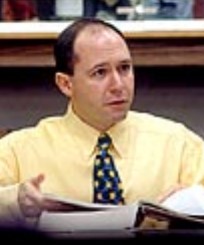 But it got worse. I had discussed how Tolkien drew upon his knowledge of Anglo-Saxon literature and culture to develop his fiction. I gave the example of line 112 of Beowulf, “eotenas ond ylfe ond orcneas,” noting that ‘orcs’ and some antecedent of ‘ents’ as well as ‘elves’ might have been inspired by the line (this was by no means an original idea; Tom Shippey had noted the connection twenty years ago).[1] In the hands of the journalist, and a photo editor who probably hadn’t read the story closely, this became a connection to Liv Tyler’s lisping pseudo-elvish in the Peter Jackson films. And the minor distortions went on. Nothing by itself was terrible, but the accumulated detail made me seem—to anyone who knew Anglo-Saxon or Tolkien—like I had no real idea what I was talking about.
But it got worse. I had discussed how Tolkien drew upon his knowledge of Anglo-Saxon literature and culture to develop his fiction. I gave the example of line 112 of Beowulf, “eotenas ond ylfe ond orcneas,” noting that ‘orcs’ and some antecedent of ‘ents’ as well as ‘elves’ might have been inspired by the line (this was by no means an original idea; Tom Shippey had noted the connection twenty years ago).[1] In the hands of the journalist, and a photo editor who probably hadn’t read the story closely, this became a connection to Liv Tyler’s lisping pseudo-elvish in the Peter Jackson films. And the minor distortions went on. Nothing by itself was terrible, but the accumulated detail made me seem—to anyone who knew Anglo-Saxon or Tolkien—like I had no real idea what I was talking about.
Twenty-four hours later I was learning about the reach of global media. Phone calls came in from Australia and England. I did radio interviews on various BBC and ABC channels (at horrible hours of the morning). It was flattering, and fun, and I thought I was able to correct some of the mistakes in the original Sunday Times piece—although I should have been more wary, since every radio producer wanted to know what ‘Tolkien activity’ I was planning for ‘The Professor’s’ birthday (digging out from a 20-inch snowstorm; what did they expect: dressing up as a hobbit?). Then the internet took over. Various Tolkien websites picked up the story and it spread beyond the English-speaking world. But to my surprise (and by this point, relief) even as more and more stories kept sprouting up all over the web like some kind of out-of-control fungus, few additional reporters called me. That’s when I learned a rather ugly secret of contemporary journalism, one that I had been unaware of even when I was a journalist and was getting a graduate degree in journalism: since the dawn of the world wide web, once someone has published an interview with you in one place, that interview is fair game for other journalists, who write as if they had interviewed you, when they haven’t. All of a sudden I was being quoted in German, Slovak, Russian, Greek, and Italian (some of which I read, none of which I speak well enough to do an interview). My favorite story was entitled “Der Professor und der Beowulf.”
Then the internet showed its ugly side. The website Slashdot.com picked up the story and a discussion thread, with hundreds of comments, developed. I was accused of fraud based, among other things, on one of those misleading details in the first story. I had mentioned that when looking at the manuscript of Beowulf and the Critics I had noticed a smudged thumbprint in the margin and been quite amazed to have been so close to one of my intellectual heroes. This was spun into a gigantic conspiracy theory, suggesting that I had forged Tolkien’s Beowulf translation and then lied about it: “how would anyone even recognize Tolkien’s fingerprint, anyway?” one person asked. “It’s just too convenient, isn’t it?” The story in the Sunday Times also mentioned that I read Beowulf in Old English to my daughter to put her to sleep (no mention that I also read Latin, Old Norse and, once, a computer manual to put her to sleep—she was two at the time; parents will understand). On Slashdot.com this became the grounds for a very nasty critique of my parenting skills. Thus one important lesson: anonymous people on the internet can be both crazy and obnoxious.
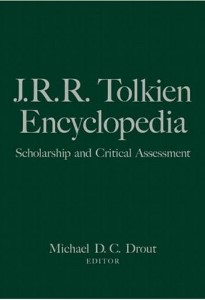 As I had immediately guessed would happen when I read the original story, the Tolkien Estate went into a panic (unnecessarily, in my view) over the whole thing and my project to edit the Beowulf translations looks as though it is not going forward any time soon. That is unfortunate, because the translations are quite good and would be a contribution to scholarship. On the other hand, due to the media exposure, my work came to the attention of a wider range of people than it otherwise would have, and I received a great many kind, interesting and intellectually stimulating letters and emails. I began to be asked to give talks on Tolkien and Anglo-Saxon and Tolkien and Beowulf, and so was able to encourage more students (of all ages) to read and enjoy the literature that we all love. And I have received some additional opportunities as an “international Tolkien expert” (it’s very interesting how I knew exactly the same amount about Tolkien before and after the media exposure, but after that exposure I was now an ‘expert’). I got to be on a National Geographic Special about The Lord of the Rings, to edit the J.R.R. Tolkien Encyclopedia, and to help found the new journal Tolkien Studies (about which you can learn more at http://acunix.wheatonma.edu/mdrout/). Most importantly, at least as far as my students were concerned, I got to see The Return of the King two weeks before everyone else.
As I had immediately guessed would happen when I read the original story, the Tolkien Estate went into a panic (unnecessarily, in my view) over the whole thing and my project to edit the Beowulf translations looks as though it is not going forward any time soon. That is unfortunate, because the translations are quite good and would be a contribution to scholarship. On the other hand, due to the media exposure, my work came to the attention of a wider range of people than it otherwise would have, and I received a great many kind, interesting and intellectually stimulating letters and emails. I began to be asked to give talks on Tolkien and Anglo-Saxon and Tolkien and Beowulf, and so was able to encourage more students (of all ages) to read and enjoy the literature that we all love. And I have received some additional opportunities as an “international Tolkien expert” (it’s very interesting how I knew exactly the same amount about Tolkien before and after the media exposure, but after that exposure I was now an ‘expert’). I got to be on a National Geographic Special about The Lord of the Rings, to edit the J.R.R. Tolkien Encyclopedia, and to help found the new journal Tolkien Studies (about which you can learn more at http://acunix.wheatonma.edu/mdrout/). Most importantly, at least as far as my students were concerned, I got to see The Return of the King two weeks before everyone else.
Now that my name is on the web and in the rolodexes of a bunch of reporters (many of whom never actually interviewed me), I get regular inquiries about Tolkien, Beowulf, Anglo-Saxon, and a host of other things, many of which I know nothing about (question: “Why is Tolkien so popular in Toronto?” How in the world would I know? How would anyone know? My answer: “It’s Andy Orchard’s fault.”). Although I’m sick of being a “Tolkien expert,” I’m happy to keep sharing my enthusiasm for Anglo-Saxon studies. Unfortunately the only people who think being an Anglo-Saxonist is more important and more exciting than being a Tolkien expert are the readers of this newsletter, and that may never change, but at least a few more people in the world are now interested in Old English and Beowulf.
I’ve also learned a few things that might be useful to readers of OEN in case you ever have to deal with the media in regard to our profession:
-
Reporters want pithy sound bites. Prepare some in advance, or reporters will mangle your own words into one. For example, you may say “the word ‘ent’ in Old English probably means some kind of giant, but we don’t really know exactly what the Anglo-Saxons were thinking about when they used the word.” You will get “Tolkien’s ents, the talking tree-people, come from Anglo-Saxon.”
-
No matter how hard you try, reporters cannot be made interested in the Sievers types.
-
You should spend a lot of time trying to distinguish between Old English, Middle English, and Shakespeare’s early Modern English. It won’t matter, because the reporters will mix it all up, but spending a lot of time explaining is your duty for being a medievalist. Think of it as a penance.
-
Reporters do not care about glosses.
-
Reporters like manuscripts a lot. They love the story of the Cotton fire. “The aptly named Ashburnham House” always gets a laugh. I also got a lot of mileage out of the Ragnrudis Codex. They all agree that The Tremulous Hand of Worcester is an excellent name for a murder mystery (if you steal this idea from me, I will sue you). Every single one of them asked why we don’t carbon-date the Beowulf manuscript.
-
Reporters always want to know who the ‘greatest living expert’ is on any topic. They don’t want to hear that there are four or five people, on two or three continents, who disagree with each other. I now just answer “Don Scragg.”
-
The name ‘Byrhtnoth’ is never going to be spelled correctly in a newspaper story, even if you spell it out letter for letter and email it to the reporter.
-
Everything is validated if there’s a movie made about it. Sword of the Valiant is possibly the worst medieval-based movie ever, but as soon as I said that Gawain and the Green Knight was the inspiration for a movie with Sean Connery in it, the reporter wanted to know how to spell “Gawain.” We may have been studying The Wanderer for 150 years, but the fact that Tolkien adapted a few lines from it for a poem in The Two Towers, and then these lines were re-adapted for the movie and recited by a moderately famous actor makes them “actually very interesting” (a reporter said just that to me).
-
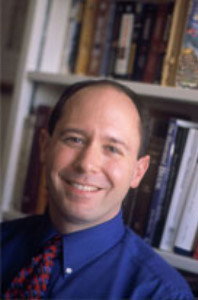 When you say “the dating of Beowulf is actually a very complicated and contentious issue. There are several schools of thought, and experts can be found who would date the poem anywhere from the eighth to the eleventh centuries. Tolkien himself thought that the poem was written circa 750, in the so-called “Age of Bede,” but…” reporters hear: “Blah blah blah blah blah blah blah blah blah blah blah blah blah blah blah blah blah blah blah 750.” And they write “Beowulf, which Drout says was written in 750…” And then you get agitated emails from your colleagues.
When you say “the dating of Beowulf is actually a very complicated and contentious issue. There are several schools of thought, and experts can be found who would date the poem anywhere from the eighth to the eleventh centuries. Tolkien himself thought that the poem was written circa 750, in the so-called “Age of Bede,” but…” reporters hear: “Blah blah blah blah blah blah blah blah blah blah blah blah blah blah blah blah blah blah blah 750.” And they write “Beowulf, which Drout says was written in 750…” And then you get agitated emails from your colleagues. -
It does not matter how many times you say that we don’t use the phrase “The Dark Ages” anymore. Someone will refer to you as a “professor who studies the Dark Ages.”
-
Only you yourself and the readers of OEN will be mortified that someone might think that you said “Beowulf was written in 750” without qualification. Even your spouse will think that you have better things to be mortified about, like the fact that in one of the pictures you look like a grinning, cross-eyed maniac with a very shiny head.
-
Your publisher will wonder, politely, why you weren’t able to work the press’ phone number and web address into every story. At least hold the book up under your chin, even if it does make you look like a grinning, cross-eyed maniac with a shiny head. Next time I will wear a t-shirt that says:
“http://www.asu.edu/clas/acmrs/publications/mrts/home.html.”
Finally, try to be philosophical, even if the reporters get everything wrong. As my dad said: “Just be glad you’re in the newspaper as ‘world expert’ (on anything) rather than ‘suspected axe murderer’.”
NOTES
[1] Yes, yes, I know that the “eotenas” in line 112 are more probably related to Tolkien’s “ettenmoors” or “trollshaws” and that he probably thought of an ‘ettin’ as a troll. “Ent” probably comes from “eald enta geweorc.” If you were angry before you read this footnote, and were about to send me a harsh email, you might wish to seek professional help sooner rather than later.
[This article was first published in the Old English Newsletter - Volume 37.3, Spring 2004]
Post-postscript - The manuscript was eventually edited for publication by Chrristopher Tolkien in 2014.
| If you are looking for new, secondhand or out-of-print books then AbeBooks UK may be able to help. |
|
|
| Alternatively, you can search and order through AbeBooks.com. |
|
|